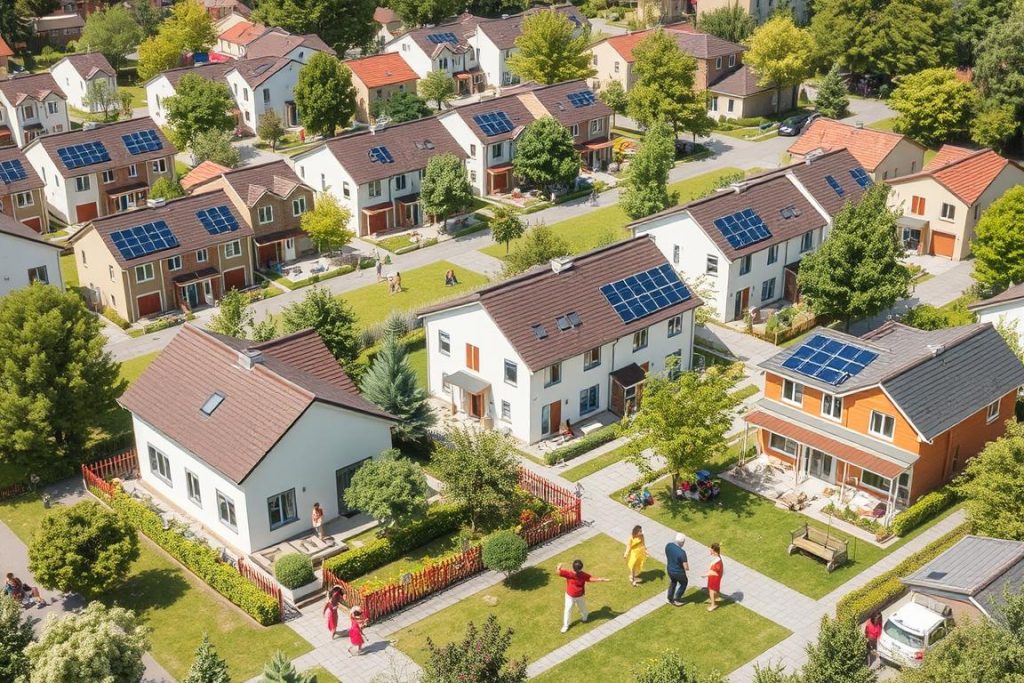Life sometimes brings challenges that shake our financial stability. At times like these, government financial assistance programs are here to help. They offer help through many ways, like income support services, programs to reduce poverty, and aid for those with low income. Knowing how to get this help is the first step.
Suddenly, you might face hard times, maybe due to a pandemic. You find your income isn’t enough for rent or basics. Then, you discover a glimmer of hope: the Emergency Rental Assistance Program. It offers a massive $25 billion to support families in need during these tough times1. Learning to navigate these options is crucial.
The government has various programs to help out, like the Affordable Connectivity Program (ACP) for internet access, and federal student loan relief in hard times1. By following our step-by-step guide, you can rebuild your financial security. Let’s start this journey to recovery together.
Getting the help you need starts with knowing it’s available. Then, you take action and find assurance in the support offered. From heating your home to staying connected online, help starts here.
Key Takeaways
- Navigating financial aid resources requires knowledge of available assistance programs.
- Eligibility must be established before applying for income support services and poverty alleviation programs.
- The comprehensive guide details steps to accessing financial aid for low-income individuals.
- Understanding and utilizing government resources effectively can provide essential support in difficult times.
- Registering with reliable government platforms assists in streamlining the application process for aid programs.
Understanding Eligibility Criteria for Government Assistance Programs
Navigating low-income assistance programs means knowing your rights to benefits. This includes the Supplemental Nutrition Program and welfare for low-income families. Understanding these qualifications is key to getting help from such programs.
Overview of Grants and Eligibility
At the federal level, assistance like Temporary Assistance for Needy Families (TANF) has clear criteria, like income limits. For example, in May 2024, TANF recipients got a median of $549 monthly2. This was up from $492 the previous year. SNAP also requires your income to be below 130% of the poverty line, with benefits based on need2.
For low-income students, Federal Pell Grants are critical. The maximum Pell Grant for 2024-2025 is $7,395. This support aims at helping students from disadvantaged backgrounds pursue higher education2.
Importance of SAM.gov Registration and Login.gov Accounts
Getting involved with assistance programs starts with registering at SAM.gov. This gives you a Unique Entity Identifier (UEI), important for using Grants.gov. It’s vital to keep your SAM.gov email and Grants.gov account linked for smooth communication3.
It’s also crucial to protect your personal info. Always keep sensitive details like your Social Security number safe. This helps avoid scams2.
Identifying the Right Federal Grants
Grants.gov is a great tool for finding grants. It lets you search by criteria that match your needs or goals. This increases your chances of getting the right help3.
Knowing how to access help for low-income families makes it easier. With tools like Grants.gov and tips for keeping your info secure, you’re better prepared. Understanding program qualifications can also guide you towards the support you need.
Low-income Assistance Programs Application Process
Applying for financial aid can seem complex but knowing the available resources helps. It’s crucial to understand the steps for programs like nutrition assistance or affordable housing. Getting familiar with forms and deadlines is key for a successful application.
To start, check if you’re eligible for aid. A handy guide to government aid explains the application steps and eligibility for different programs. It helps prepare for the application process4.
Take the Low Income Energy Assistance Program (LEAP) in Colorado, for example. It runs from November 1 to April 30 each year and helps with heating costs. Eligibility depends on household size and income. Qualified applicants receive a credit of $200 to $1,000 for heating4. Yet, LEAP won’t cover your full heating bill. It’s important to plan your budget with this in mind5.
Once you know you’re eligible, gather all needed documents. Carefully fill out the forms and fix any mistakes to avoid delays4. You can call 1-866-HEAT-HELP for personalized help with your application5.
If there’s an urgent need, like a risk of your utilities being shut off, tell the application office. LEAP gives priority to emergencies to speed up the process5.
About affordable housing, nearly 970,000 households live in public housing managed by over 3,300 agencies in the U.S. Eligibility for public housing includes having an income below certain limits. HUD sets these limits at 80% of the area’s median income for lower income and 50% for very low income6.
| Program | Benefits | Contact Information | Application Period |
|---|---|---|---|
| LEAP | $200-$1000 for heating costs | 1-866-HEAT-HELP | Nov 1 – Apr 30 |
| Public Housing | Subsidized housing based on income | Local Housing Agency | Year-Round |

To wrap up, the keys to applying for assistance are preparation, timeliness, and accuracy. Leverage resources like the government programs guide and ask for help when needed. Doing so will improve your odds of getting approved4.
Conclusion
Knowing how to get government help for low-income families is key to financial stability. This article has shown the importance of a clear plan to get welfare benefits. The government has increased its support over the years7. For example, discretionary spending went up to 7.8% of GDP in 2020. Critical times have seen a rise in mandatory spending to 21.8% of GDP, showing how vital these aids are7.
Programs like Medicaid, CHIP, Medicare, and Social Security help over 153 million people7. This shows the big scale and reach of these programs. Hospital help and charity care programs greatly improve healthcare access8. They have led to more people receiving necessary health services and tests8.
It’s crucial to know how to apply for government aid properly. Using tools like Grants.gov and understanding program criteria are important steps. Finishing applications and meeting deadlines are strategic moves for better financial health. So, use this guide to make the most of government help and fight poverty in your area.
FAQ
How do I determine if I’m eligible for government financial aid programs?
What is SAM.gov and why do I need to register?
Can individuals apply for the same government assistance programs as organizations?
How do I find the right federal grants that align with my needs?
What is a workspace on Grants.gov and how does it help in the application process?
Are there any income support services available through these programs?
How can I benefit from affordable housing programs?
What kind of welfare benefits are available for low-income households?
How do social programs contribute to poverty alleviation in impoverished communities?
What information do I need to provide when applying for welfare benefits?
Source Links
- Personal Finance and Consumer Protection – Steps for Quicker Financial Relief – https://home.treasury.gov/policy-issues/consumer-policy/personal-finance-and-consumer-protection-steps-for-quicker-financial-relief
- Assistance for Low-Income Families – Experian – https://www.experian.com/blogs/ask-experian/government-programs-for-low-income-families/
- About Program Income and Public Assistance – https://www.census.gov/topics/income-poverty/public-assistance/about.html
- How to Apply for LEAP – Energy Outreach Colorado – https://energyoutreach.org/how-to-apply-for-leap/
- Low Income Energy Assistance Program (LEAP) – https://bouldercounty.gov/families/financial/low-income-energy-assistance/
- HUD’s Public Housing Program – https://www.hud.gov/topics/rental_assistance/phprog
- Safety Net Programs – The Policy Circle – https://www.thepolicycircle.org/brief/safety-net-programs/
- The Impact of Financial Assistance Programs on Health Care Utilization: Evidence from Kaiser Permanente – https://www.ncbi.nlm.nih.gov/pmc/articles/PMC9634821/

